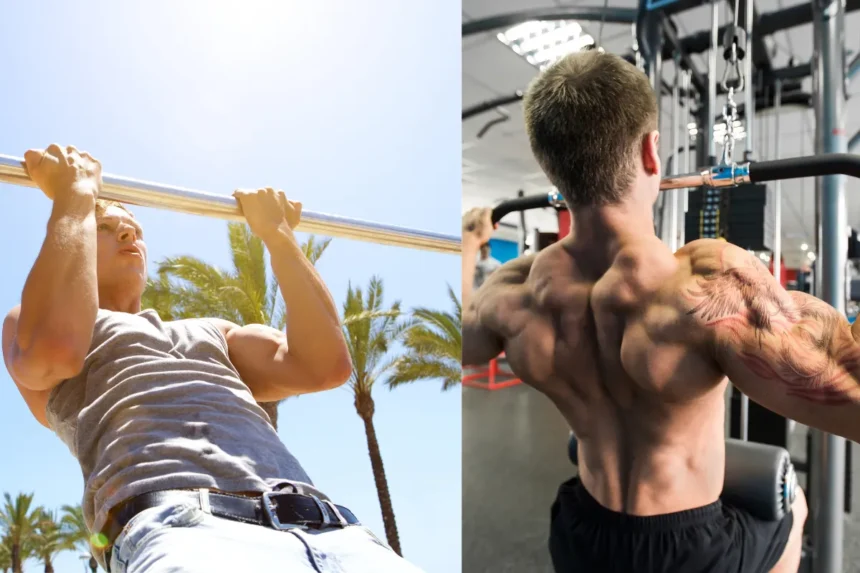Face pulls are a fundamental exercise for strengthening the muscles of the upper back, shoulders, and rear delts.
They are versatile and can be performed with or without specialized gym equipment.
Incorporating face pulls into your workout routine can improve posture, shoulder stability, and overall upper body strength.
In this comprehensive guide, we’ll explore the proper technique for performing face pulls both with and without a machine, along with variations to target specific muscle groups.
Understanding the Anatomy:
Before diving into the exercises, it’s crucial to understand the muscles involved in face pulls:
Rear Deltoids: Located at the back of the shoulder, these muscles are responsible for shoulder extension and external rotation.
Rhomboids: Situated between the shoulder blades, the rhomboids retract the scapulae and assist in maintaining good posture.
Trapezius: The traps are divided into upper, middle, and lower portions. They assist in shoulder movement and stabilization.
Rotator Cuff Muscles: These small muscles around the shoulder joint help stabilize and support shoulder movements.
Face Pulls with a Machine:
Face pulls using a cable machine or a specialized face pull machine offer consistent resistance throughout the movement. Here’s how to perform them:
Face Pulls Without Equipment:
If you don’t have access to a cable machine, you can still perform face pulls using resistance bands or bodyweight exercises. Here’s how:
Resistance Band Face Pulls:
Anchor a resistance band to a sturdy object at chest height.
Grab the ends of the band with an overhand grip, hands slightly wider than shoulder-width apart.
Step back to create tension in the band and assume a staggered stance for stability.
Perform the face pull movement, focusing on squeezing the shoulder blades together.
Bodyweight Face Pulls:
Stand facing a sturdy bar or suspension trainer anchored at chest height.
Grip the bar with an overhand grip, hands slightly wider than shoulder-width apart.
Lean back, keeping your body straight, and pull your chest towards the bar.
Pause at the top of the movement, then lower yourself back to the starting position.
Tips:
Focus on maintaining tension in the muscles throughout the movement.
Use a controlled tempo to maximize muscle engagement.
Adjust the resistance by changing the thickness or tension of the band.
Common Mistakes to Avoid:
Shrugging the shoulders:
Keep your shoulders relaxed and focus on engaging the targeted muscles.
Using excessive momentum:
Control the movement to ensure proper muscle activation.
Pulling with the arms:
Emphasize pulling with the muscles of the upper back rather than the arms.
Allowing the elbows to drop:
Keep your elbows high and wide throughout the movement to target the rear delts effectively.
Variations and Progressions:
Once you’ve mastered the basic face pull, you can incorporate variations to add variety and challenge to your workouts:
Single-arm Face Pulls:
Perform the exercise with one arm at a time to isolate each side and address muscle imbalances.
High Cable Face Pulls:
Adjust the attachment point of the cable machine to perform the exercise from a higher angle, targeting the upper traps and rear delts.
Resistance Band Pull-aparts:
Hold a resistance band with both hands in front of you at shoulder height and pull the band apart, focusing on squeezing the shoulder blades together.
Overhead Face Pulls:
Attach a resistance band or cable to a high anchor point and pull the handles overhead, targeting the upper traps and rear delts from a different angle.
Setup:
Attach a rope or handles to the high pulley of the cable machine.
Stand facing the machine and grab the handles with an overhand grip, hands slightly wider than shoulder-width apart.
Execution:
Begin by pulling the handles towards your face, keeping your elbows high and wide.
Focus on squeezing your shoulder blades together at the peak of the movement.
Slowly return to the starting position, maintaining control over the weight.
Tips:
Keep your torso upright and avoid using momentum to complete the exercise.
Adjust the weight to ensure you can perform the movement with proper form.
Aim for a smooth, controlled motion throughout the exercise.
Conclusion:
Face pulls are a versatile and effective exercise for strengthening the muscles of the upper back, shoulders, and rear delts.
Whether you’re using a cable machine, resistance bands, or bodyweight, mastering proper form is essential for maximizing results and reducing the risk of injury.
By incorporating face pulls into your workout routine and experimenting with different variations, you can build a stronger, more balanced upper body and improve overall athletic performance.

